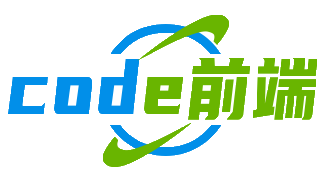p>做Vue2项目时,想给文字加打字机效果让页面更生动?但怎么把逐个蹦字的互动感做出来?这篇从基础实现到进阶优化,把原理、代码、细节全拆明白,新手也能跟着做~
为啥Vue2能轻松实现?
打字机效果本质是让文字“一个接一个出现”,背后需要两个关键逻辑:控制文字显示的节奏(每个字啥时候出来)、让页面跟着文字变化更新。
Vue2的「数据响应式」正好能解决第二个问题——只要修改绑定的变量,页面会自动更新,所以我们只需要把精力放在「怎么控制每个字出现的节奏」上。
简单说,思路是这样:准备一个「完整文字」和一个「当前已显示文字」,用定时器(setInterval)每次给「当前文字」加一个字,直到把完整文字打完,就像打字员一个字一个字敲,Vue负责把敲好的字显示到页面上~
基础版打字机:3步写出核心效果
先从最基础的版本入手,实现「文字逐字显示」,步骤很清晰:准备数据 → 定时器控制打字 → 模板绑定显示。
定义响应式数据
在Vue组件的data里,存三个关键数据:
text:要显示的完整文字(比如'Hello Vue2');typedText:当前已打出的文字(初始为空,慢慢拼接);currentIndex:记录当前打到第几个字(初始0,每次加1);timer:定时器标识(用来后续清除,防止内存泄漏)。
代码示例:
data() {
return {
text: 'Hello Vue2 打字机效果',
typedText: '',
currentIndex: 0,
timer: null
}
}
定时器控制「逐字拼接」
在mounted钩子(组件渲染完后)里启动定时器,每次循环做这两件事:
- 把
text的第currentIndex个字符,拼到typedText里; currentIndex加1,直到打完所有字,再清除定时器。
代码示例:
mounted() {
this.startTyping()
},
methods: {
startTyping() {
this.timer = setInterval(() => {
// 判断是否还没打完
if (this.currentIndex < this.text.length) {
this.typedText += this.text[this.currentIndex]
this.currentIndex++
} else {
// 打完了,清定时器
clearInterval(this.timer)
}
}, 100) // 每个字间隔100毫秒,可调整速度
}
}
模板绑定,把效果显示出来
在<template>里,把typedText绑定到页面上:
<template>
<div class="typewriter-box">
{{ typedText }}
</div>
</template>
现在运行组件,就能看到文字一个一个蹦出来啦~ 但这版太“机械”,接下来加细节让它更像真实打字机!
细节拉满:让打字效果更「拟真」的3个技巧
真实打字不会每个字间隔完全一样,还会有光标闪烁、偶尔打错删除……加这些细节,互动感直接翻倍!
随机间隔:避免「机器人节奏」
真实打字员的手速有快有慢,所以给每个字的间隔加随机时间差,把固定的100毫秒,改成Math.random()生成的范围值(比如50-150毫秒)。
修改定时器逻辑:
startTyping() {
this.timer = setInterval(() => {
if (this.currentIndex < this.text.length) {
this.typedText += this.text[this.currentIndex]
this.currentIndex++
} else {
clearInterval(this.timer)
}
}, Math.random() * 100 + 50) // 间隔在50-150毫秒之间
}
光标闪烁:模拟真实输入框
用CSS动画做一个「竖线光标」,让它一闪一闪,步骤:
- 给文字容器加伪元素
::after设为; - 写一个闪烁动画,让伪元素透明度来回切换。
CSS代码:
.typewriter-box {
position: relative; /* 伪元素要相对定位 */
}
.typewriter-box::after {
content: '|';
animation: blink 1s step-end infinite; /* step-end让闪烁更干脆 */
}
@keyframes blink {
from, to { opacity: 1; }
50% { opacity: 0; }
}
错误回退:模拟「打错→删除→重打」
真实打字会出错,所以加个“打错后删除重写”的逻辑,思路:
- 用
mistakeCount记录错误次数; - 随机触发错误(比如
10%概率),删除最后一个字; - 错误后重新开始打这个字。
代码示例(修改startTyping):
data() {
return {
// ...其他数据
mistakeCount: 0 // 新增错误计数
}
},
methods: {
startTyping() {
this.timer = setInterval(() => {
if (this.currentIndex < this.text.length) {
// 10%概率触发错误,且错误次数<3次
if (Math.random() < 0.1 && this.mistakeCount < 3) {
this.typedText = this.typedText.slice(0, -1) // 删除最后一个字
this.mistakeCount++
} else {
this.typedText += this.text[this.currentIndex]
this.currentIndex++
this.mistakeCount = 0 // 没错的话,重置错误计数
}
} else {
clearInterval(this.timer)
}
}, 100)
}
}
加了这三个细节,效果瞬间从“机械打字”变成“真人操作”,用户体验拉满~
组件化封装:项目里随用随拿
如果多个页面需要打字机效果,重复写代码太麻烦,把逻辑封装成可复用组件,传参就能用!
组件设计:Props传参 + 事件通知
props:接收要显示的文字(text)、打字速度(speed)、是否显示光标(hasCursor)等;emits:打字完成后,触发finished事件通知父组件。
组件代码(Typewriter.vue):
<template>
<div class="typewriter" :class="{ 'with-cursor': hasCursor }">
{{ typedText }}
</div>
</template>
<script>
export default {
name: 'Typewriter',
props: {
text: { type: String, required: true },
speed: { type: Number, default: 100 },
hasCursor: { type: Boolean, default: true }
},
data() {
return {
typedText: '',
currentIndex: 0,
timer: null
}
},
mounted() {
this.startTyping()
},
methods: {
startTyping() {
this.timer = setInterval(() => {
if (this.currentIndex < this.text.length) {
this.typedText += this.text[this.currentIndex]
this.currentIndex++
} else {
clearInterval(this.timer)
this.$emit('finished') // 通知父组件“打完了”
}
}, this.speed)
}
},
beforeDestroy() {
clearInterval(this.timer) // 销毁前清定时器
}
}
</script>
<style scoped>
.typewriter {
/* 基础样式 */
}
.with-cursor::after {
content: '|';
animation: blink 1s step-end infinite;
}
@keyframes blink {
from, to { opacity: 1; }
50% { opacity: 0; }
}
</style>
父组件调用:传参+监听事件
在需要的页面引入组件,传text、speed,监听finished事件:
<template>
<div>
<Typewriter
text="这是封装后の打字效果"
:speed="150"
@finished="doSomething"
/>
</div>
</template>
<script>
import Typewriter from './components/Typewriter.vue'
export default {
components: { Typewriter },
methods: {
doSomething() {
console.log('打字完成!可以做后续操作~')
}
}
}
</script>
封装后,不同页面只需一行代码就能实现打字机效果,效率翻倍!
性能优化:长文本/多组件场景不卡壳
如果文字特别长(比如几百字),或者页面有多个打字机组件,容易出现「页面卡顿」,这时候要做性能优化~
定时器必销毁:防止内存泄漏
组件销毁时,定时器还在运行的话,会一直占用内存,甚至触发错误,所以在beforeDestroy钩子手动清除:
beforeDestroy() {
clearInterval(this.timer)
}
长文本「分片加载」:减少DOM更新频率
如果文字有几百字,逐字更新DOM会很频繁,可以分段加载:比如把文字分成10个字符一段,每段一次性显示,段与段之间间隔稍长。
修改数据和逻辑:
data() {
return {
text: '超长文字...'.split(''), // 转成字符数组
typedText: '',
currentChunk: 0, // 当前分段索引
chunkSize: 10, // 每段显示10个字符
timer: null
}
},
methods: {
startTyping() {
this.timer = setInterval(() => {
const start = this.currentChunk * this.chunkSize
const end = start + this.chunkSize
if (start < this.text.length) {
// 分段拼接
this.typedText += this.text.slice(start, end).join('')
this.currentChunk++
} else {
clearInterval(this.timer)
}
}, 1000) // 每段间隔1秒,段内字符连续显示
}
}
这样DOM更新频率从「每个字一次」变成「每10个字一次」,性能友好很多~
玩出花样:和其他交互组合
打字机效果不止「自动播放」,和鼠标、滚动、语音结合,玩法更多!
鼠标悬停触发:hover时打字,离开暂停
给容器绑定@mouseenter和@mouseleave事件,控制定时器的启动/暂停:
<template>
<div
class="typewriter"
@mouseenter="start"
@mouseleave="pause"
>
{{ typedText }}
</div>
</template>
<script>
export default {
data() {
return {
text: '悬停开始打字~',
typedText: '',
currentIndex: 0,
timer: null
}
},
methods: {
start() {
if (!this.timer) { // 防止重复启动
this.timer = setInterval(() => {
if (this.currentIndex < this.text.length) {
this.typedText += this.text[this.currentIndex]
this.currentIndex++
} else {
this.pause()
}
}, 100)
}
},
pause() {
clearInterval(this.timer)
this.timer = null
}
}
}
</script>
滚动到元素时自动触发
用IntersectionObserver判断「元素是否进入视口」,进入后开始打字:
mounted() {
const observer = new IntersectionObserver((entries) => {
if (entries[0].isIntersecting) { // 元素进入视口
this.startTyping()
observer.unobserve(this.$el) // 只触发一次
}
})
observer.observe(this.$el) // 监听当前组件的DOM
}
配合语音合成:边打字边读
用浏览器的Web Speech API,每个字显示时播放语音,注意:部分浏览器需要用户交互(比如点击)后才能播放语音,所以实际项目要处理兼容性~
methods: {
startTyping() {
this.timer = setInterval(() => {
if (this.currentIndex < this.text.length) {
this.typedText += this.text[this.currentIndex]
// 语音合成:读当前字符
const utterance = new SpeechSynthesisUtterance(this.text[this.currentIndex])
speechSynthesis.speak(utterance)
this.currentIndex++
} else {
clearInterval(this.timer)
}
}, 100)
}
}
这些组合玩法能让打字机效果更有创意,适配不同场景~
踩坑指南:效果出不来?这些问题要排查
写代码时遇到「文字直接显示全部」「光标不闪」「定时器关不掉」这些问题?看这里快速排查~
文字没逐字显示,直接蹦出全部
→ 检查定时器逻辑:是不是typedText被直接赋值为text,而不是逐字拼接?比如误写this.typedText = this.text而不是。
→ 检查mounted里有没有调用startTyping方法?漏调的话定时器没启动,文字直接显示。
光标样式不显示
→ 检查CSS:伪元素::after的content有没有设为?
→ 检查类名绑定:如果用了hasCursor控制光标,看看class是否正确绑定(比如:class="{ 'with-cursor': hasCursor }")。
→ 检查动画:@keyframes blink是否正确定义,有没有拼写错误?
组件销毁后,打字还在继续
→ 检查beforeDestroy钩子:有没有调用clearInterval(this.timer)?没清的话,定时器会一直运行,甚至引发重复打字。
随机间隔/错误回退没效果
→ 检查逻辑:Math.random()的范围是否正确?比如想做50-150毫秒间隔,是不是写成了Math.random() * 50 + 100(范围变成100-150)?
→ 错误回退的概率和次数限制是否合理?比如Math.random() < 0.01概率太低,肉眼很难看到效果。
遇到问题别慌,把代码拆分成「数据更新→定时器逻辑→DOM渲染」三步,逐步排查就能解决~
从基础实现到细节优化,再到组件化和创意玩法,Vue2做打字机效果的思路其实很清晰——用数据响应式管渲染,用定时器管节奏,只要把这两个核心点吃透,再结合业务场景加细节,就能做出既炫酷又实用的互动效果~ 现在就打开编辑器,把上面的技巧改成自己项目里的代码试试吧~
版权声明
本文仅代表作者观点,不代表Code前端网立场。
本文系作者Code前端网发表,如需转载,请注明页面地址。
 code前端网
code前端网




发表评论:
◎欢迎参与讨论,请在这里发表您的看法、交流您的观点。